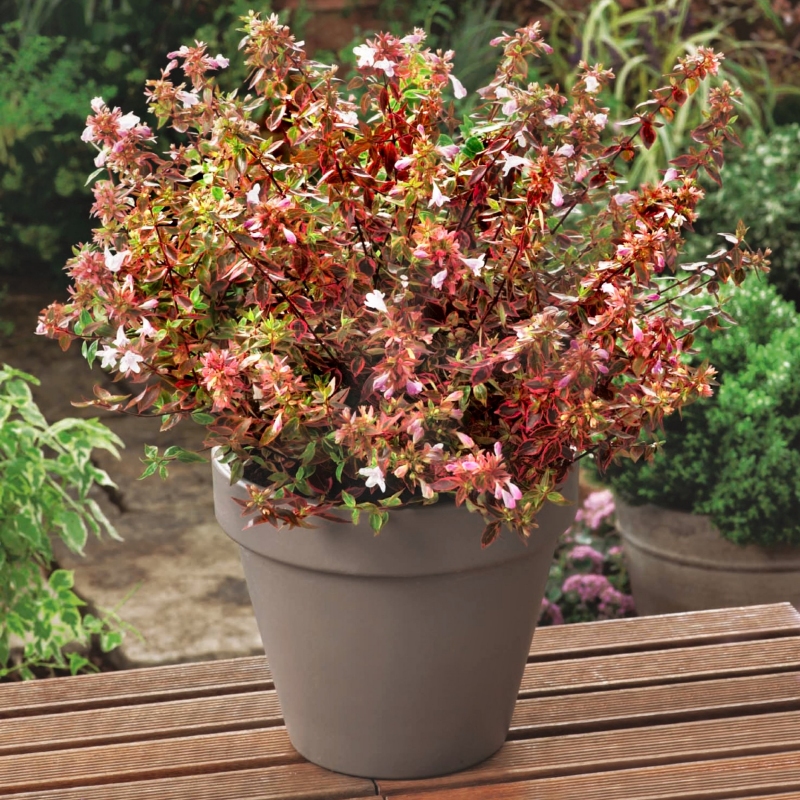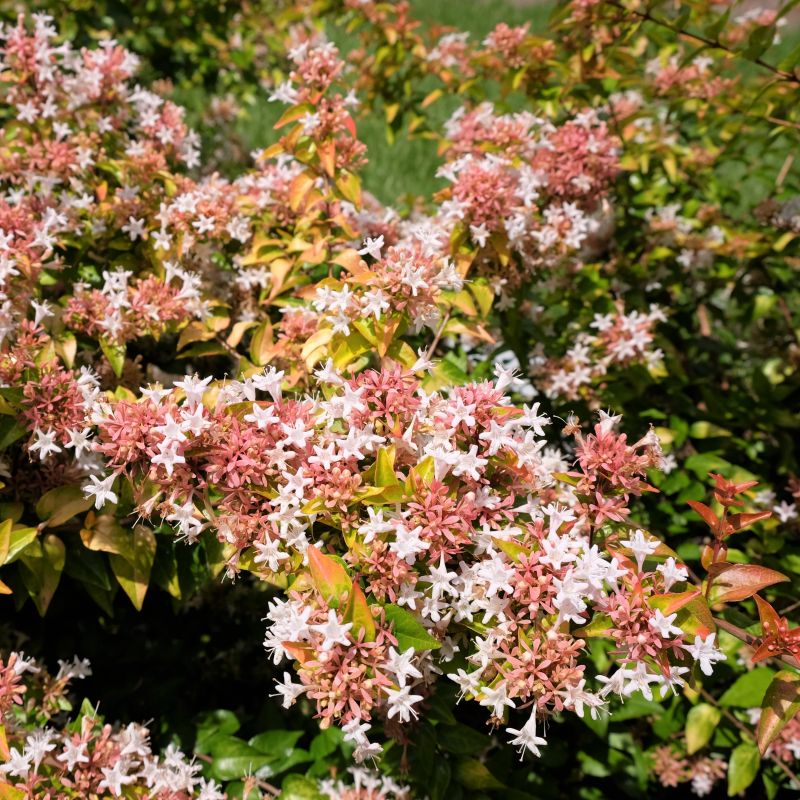

Big Blue Liriope Plant With Purple Blooms
Liriope muscari Big Blue
18 reviews


Big Blue Liriope Plant With Purple Blooms
Liriope muscari Big Blue
18 reviews
- Low-maintenance plant that requires minimal care
- Produces beautiful purple blooms in late summer
- Adds color and texture to any garden or landscape
- Ships to 43215 in 3 to 7 days
- Free Shipping
- Plant Arrival Guarantee
- In Stock
- Free Plant Consult
$200
$204.00
$292.00
30% Off
- 1801, 15 Pack
- 1 Gallon
- 1801, 6 Pack
- 2.5 Gallon
- 2.5 Qt.
- Quart Container
Why Big Blue Liriope Plant With Purple Blooms?
Big Blue Liriope is a hardy perennial plant with striking purple blooms that add a pop of color to any garden. This low-maintenance plant is also drought tolerant and deer resistant, making it perfect for busy gardeners. With its grass-like foliage and elegant arching flower spikes, Big Blue Liriope is a beautiful addition to borders, containers, or mass plantings.
People who loved this plant also bought
Sunlight
Big Blue Liriope plants with purple blooms prefer partial to full sun conditions. They enjoy receiving at least six hours of sunlight each day to promote healthy growth and vibrant blooms. However, they can also tolerate some shade if necessary.
Watering
The Big Blue Liriope plant with purple blooms requires regular watering, especially during hot and dry periods. It prefers moist but well-draining soil, so water deeply and allow the top few inches of soil to dry out before watering again. Avoid overwateri
Fertilizing
The Big Blue Liriope plant with purple blooms benefits from an annual application of a balanced slow-release fertilizer in early spring. Use a fertilizer with a formulation such as 10-10-10 or 10-5-5 to promote healthy growth and vibrant flower color. Avoi
Big Blue Liriope Plant With Purple Blooms (Liriope muscari Big Blue)
The Big Blue Liriope Plant is a beautiful and versatile perennial that is perfect for adding color and texture to your garden or landscape. This plant features long, narrow leaves that are a deep green color and grow in clumps, reaching a height of about 12-18 inches.
One of the most striking features of the Big Blue Liriope Plant is its purple blooms. These small, bell-shaped flowers appear in late summer or early fall and add a pop of color to your garden. The blooms are also attractive to butterflies and other pollinators, making this plant a great choice for a wildlife-friendly garden.
The Big Blue Liriope Plant is easy to care for and requires minimal maintenance. It is drought-tolerant once established and is resistant to pests and diseases. This plant is also deer-resistant, making it a great option for gardens in areas where deer are a problem.
Whether planted in borders, as a ground cover, or in containers, the Big Blue Liriope Plant is sure to make a statement in your garden with its beautiful foliage and striking purple blooms.
Plant Information:
| Botanical Name: | Liriope muscari Big Blue |
| USDA Zones: | 0 - 10 |
| Mature Height: | 12-18 in |

Pollination Info
Big Blue Liriope Plant with Purple Blooms (Liriope muscari Big Blue) Pollination Info
The Big Blue Liriope plant, also known as Liriope muscari Big Blue, produces beautiful purple blooms that attract pollinators such as bees, butterflies, and hummingbirds. These pollinators play a crucial role in the reproduction of the plant by transferring pollen from the male parts (anthers) to the female parts (stigma) of the flowers.
Pollination Process:
When a pollinator visits the flowers of the Big Blue Liriope plant in search of nectar, it inadvertently brushes against the anthers, collecting pollen on its body. As the pollinator moves from flower to flower, it transfers some of this pollen to the stigma, fertilizing the flower and initiating the process of seed production.
Importance of Pollination:
Pollination is essential for the Big Blue Liriope plant to produce seeds, which are necessary for the reproduction and spread of the species. Without pollinators, the plant would not be able to set seeds and would struggle to survive and reproduce.
Attracting Pollinators:
To attract more pollinators to your Big Blue Liriope plant, you can plant flowers nearby that provide additional sources of nectar and pollen. Bees, butterflies, and hummingbirds are drawn to colorful flowers with sweet nectar, so incorporating a variety of blooming plants in your garden can help create a pollinator-friendly environment.
By understanding the pollination process and the importance of pollinators, you can help support the growth and reproduction of your Big Blue Liriope plant and other flowering plants in your garden.
FAQ
Big Blue Liriope Plant With Purple Blooms (Liriope muscari Big Blue) FAQ
1. What is the scientific name of the Big Blue Liriope plant?
The scientific name of this plant is Liriope muscari Big Blue.
2. What are the characteristics of the Big Blue Liriope plant?
The Big Blue Liriope plant is a grass-like perennial with arching, strap-like leaves that are green in color. It produces spikes of small purple blooms in late summer to early fall.
3. How tall does the Big Blue Liriope plant grow?
This plant typically grows to a height of about 12-15 inches.
4. Where is the best location to plant the Big Blue Liriope?
The Big Blue Liriope plant prefers partial to full shade and well-drained soil. It can be planted in borders, mass plantings, or as a ground cover.
5. How often should the Big Blue Liriope plant be watered?
Water the plant regularly during the growing season, especially during dry periods. Avoid overwatering as it can lead to root rot.
6. How do I care for the Big Blue Liriope plant in winter?
During winter, the plant may die back to the ground in colder climates. Mulch the plant to protect the roots and cut back any dead foliage in spring.
7. How do I propagate the Big Blue Liriope plant?
The plant can be divided in spring or fall by digging up the clumps and separating them into smaller sections with roots attached. Replant the divisions in desired locations.
8. Is the Big Blue Liriope plant deer-resistant?
Yes, this plant is considered deer-resistant due to its tough and leathery foliage.
9. Does the Big Blue Liriope plant attract pollinators?
The purple blooms of the plant can attract bees, butterflies, and other pollinators.
10. Any special tips for growing Big Blue Liriope plant?
Provide regular fertilizer in spring to promote healthy growth and flowering. Remove faded flowers to encourage more blooms.
Planting & Care
Planting and Care for Big Blue Liriope Plant With Purple Blooms
Planting:
To plant a Big Blue Liriope plant with purple blooms, follow these steps:
- Choose a location with well-drained soil and partial to full shade.
- Dig a hole that is the same depth as the root ball and twice as wide.
- Place the plant in the hole and backfill with soil, pressing gently to remove air pockets.
- Water the plant thoroughly after planting.
- Water regularly, especially during dry periods.
- Apply a layer of mulch around the plant to help retain moisture and suppress weeds.
- Prune dead foliage in early spring to encourage new growth.
- Fertilize in spring with a balanced fertilizer to promote healthy growth and blooming.
- Divide clumps every 2-3 years to prevent overcrowding.
Care:
Here are some tips to care for your Big Blue Liriope plant:
By following these planting and care tips, your Big Blue Liriope plant with purple blooms should thrive and add beauty to your garden.
Check Out These Verified Customer Reviews:
Customer Reviews
4.7 out of 5 based on 18 reviews
Thank you! Your review has been submitted.
Thriving in my garden already!
The shipment was quick, and the plants were securely packaged.
Fast and secure shipment.
Item has been added to your cart.

























